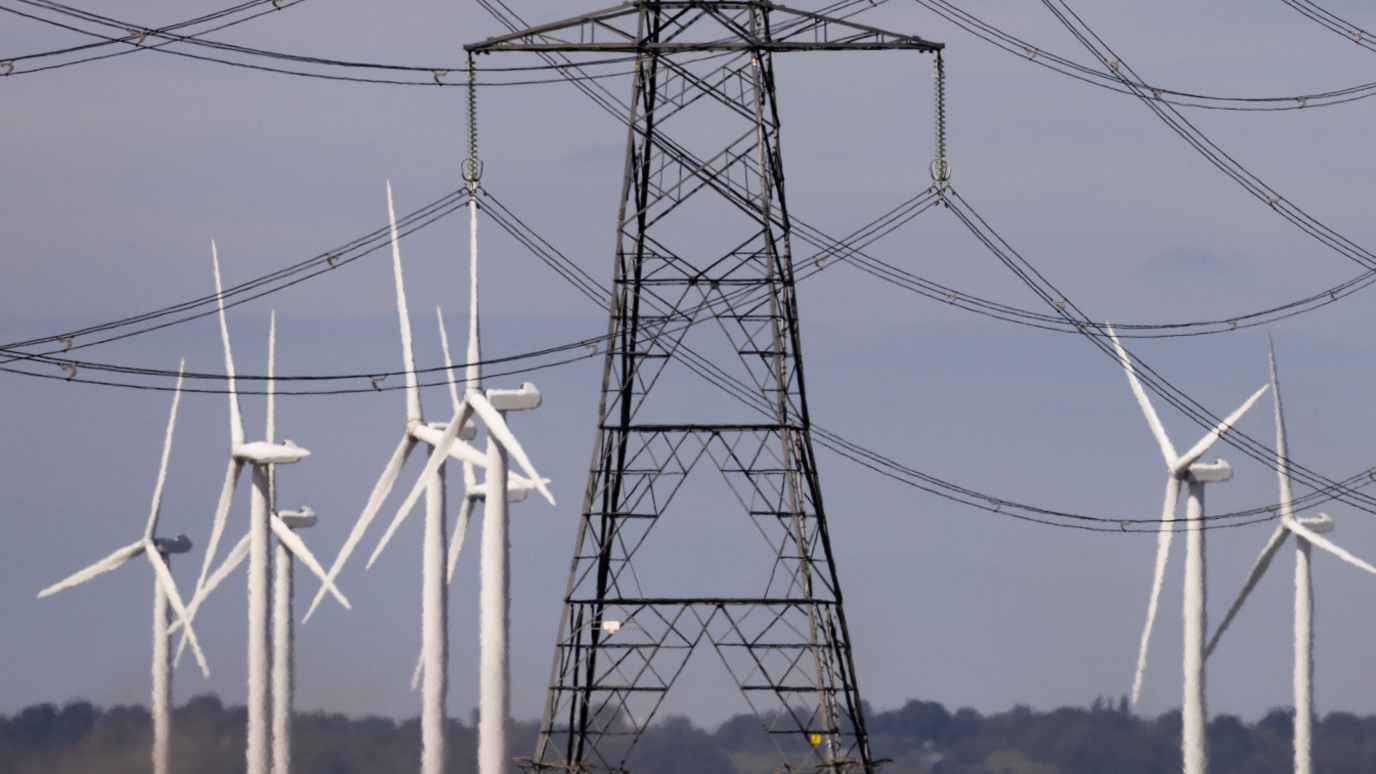Green energy plan needs 600 miles of power lines - report

- Published
Nearly 620 miles (1,000km) of new power lines need to be built to meet the government's clean energy plans, official energy planners have concluded.
In a report, the body in charge of linking new projects to the grid said Labour's target to decarbonise electricity by 2030 was "achievable" but a "huge challenge".
It will warn that infrastructure for the electricity network will need to be built much faster than it has been over the last decade to meet the pledge.
Energy Secretary Ed Miliband said ministers were committed to "significant reforms" of the planning system to speed up new connections.
Faster grid hook-ups planned for some green energy projects
- Published18 October 2024
Is Labour's 2030 green energy goal realistic and how would it affect bills?
- Published31 May 2024
Miliband asked the National Energy System Operator (NESO) to review ministers' clean energy plans after Labour's return to power at July's general election.
The body was originally owned by National Grid, a private company, but transferred to government ownership last month.
The government is expected to publish its action plan for modernising the grid in the coming months.
Sources within government see its report, to be published on Tuesday, as a vindication of its pledge to deliver a net zero carbon electricity system in Great Britain by 2030, a key part of Labour's election manifesto.
But it also highlights the scale of the task when it comes to increasing the supply of renewable energy, and connecting it to the grid.
Meeting the pledge, it finds, would require a significant boost to offshore wind capacity, alongside increased electrification of heat, transport and industry.
Nearly 1,000 km (620 miles) of new power lines would be required to connect new renewable energy to the grid, along with 4,800 km of undersea cables, it said.
The report points out that this would be more than double over five years what has been built in total in the last 10, requiring many projects to begin construction in the next 6 months to two years.
It added that this "challenging" timescale will require changes to the planning system to cut down the time new projects take to get approval.
The construction of hundreds of miles of new pylons is also likely to run into political opposition, with a number of schemes facing fierce local opposition.
'Ideological'
The previous Conservative government had signalled it was open to the idea of making cash payments to households in the path of new large electricity pylons, alongside existing community compensation schemes paid through consumer bills.
The 2030 target is five years ahead of that promised by the Tories before the election, with Claire Coutinho, shadow energy secretary under Rishi Sunak, branding it "unrealistic" and "simply ideological".
There has also been some scepticism within the trade union movement about the potential impact on jobs.
The GMB union, which represents oil and gas workers and donates to Labour, said any government plans to boost wind and solar power should come with a "cast iron commitment to delivering quality jobs here".
Impact on bills
NESO's report estimated that the 2030 clean energy plan would require an average of £40bn in investment a year, most of it from the private sector, requiring a significant boost from current levels.
It did not model the impact of its blueprint on consumer bills "given the heavy dependence on policy choices".
But the report predicts wholesale energy prices are likely to fall with decreased reliance on gas, which often spikes unpredictably.
The exact timing of any drop in costs depends on how quickly clean energy infrastructure can be built and related policy decisions, the report said.
It argued that consumer costs were unlikely to rise, as fixed prices for renewable projects would offset reduced natural gas needs.
It also said the 2030 target would depend on a four to fivefold expansion of its demand flexibility service, under which households and firms are encouraged to save money by using less electricity at busy times.
The authority will also begin consulting on plans to overhaul the system for connecting new renewable power stations to the grid, to prioritise projects that are ready to be built.
Currently some projects can face waiting times stretching long into the next decade to get connected.
The looming battle over pylons for green energy
- Published31 July 2023
Can electricity pylons ever be beautiful?
- Published21 November 2023

Sign up for our Future Earth newsletter to get exclusive insight on the latest climate and environment news from the BBC's Climate Editor Justin Rowlatt, delivered to your inbox every week. Outside the UK? Sign up to our international newsletter here.